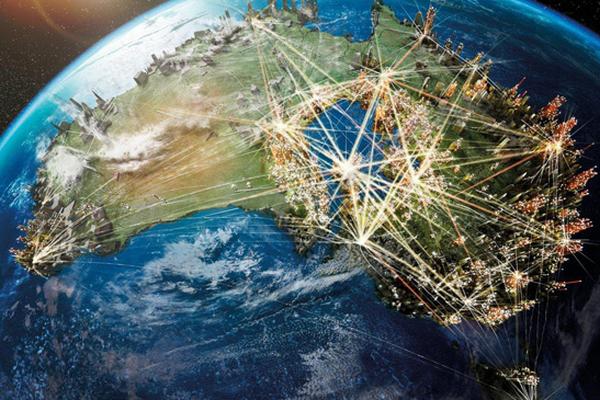Published on the 07/02/2018 | Written by Jonathan Cotton

A new report looks to map Australia’s future competition in the $1.6 trillion global innovation race…
Produced by Innovation and Science Australia, the report, titled Australia 2030: Prosperity through Innovation, looks to “contribute to the wellbeing and prosperity of all Australians by strengthening Australia’s innovation performance to become a leading innovation nation.”
Subtitled “A plan for Australia to thrive in the global innovation race”, the 125 page report makes 30 recommendations for the government around the broad categories of Education, Industry, Government, Research and Development, and Culture and Ambition.
More of a mission statement than a roadmap, the report urges government intervention across a wide spectrum of interest, advocating for federal support of competitive industries and companies, collaborative education and knowledge institutions, the creation of plentiful jobs (“that are meaningful and productive”) and a fair and inclusive society with a high quality of life, among other things.
“Australia will be counted within the top tier of innovation nations,” declares the report. “We will take pride in our global reputation for excellence in science, research and commercialisation”.
It’s a big document and an ambitious on too, that can be read as either sweeping in scope or a peculiar patchwork of disconnected ideas. Either way, a lot gets covered: From data rights to preserving the Great Barrier Reef, improving customer-facing government digital channels to converting entire cities to natural gas, the report urges thinking big when planning for Australia, circa 2030.
For industry, the document lists five strategic opportunities available to the government for accelerating growth, innovation and exports in the next twelve years:
“Business R&D investment can be increased by better targeting the Research and Development Tax Incentive program, and increasing support for direct grant programs that target national priorities,” says the report.
“The growth of exporting firms, particularly young high-growth firms, can be encouraged by increasing Export Market Development Grants funding, and expanding and making better use of trade agreements.”
“The opportunities presented by the ‘fourth wave’ of the internet can be captured by strengthening Australia’s digital economy including capability in Artificial Intelligence and machine learning.”
The report says that business productivity in “all sectors can be facilitated by healthy levels of competition,” and that “Australia’s innovation investment and talent can be strengthened by improving access to global talent pools and fostering greater diversity”.
To achieve these aims, the report recommends better benchmarking, introduction of a “collaboration premium of up to 20 per cent on non-refundable tax offsets to incentivise collaboration”, and new research funding streams, among other things.
The idea of federal and local government acting as canary in the coalmine for new technologies and as role model for best-digital-practice is a key focus. The report recommends the government “become a catalyst for innovation and be recognised as a global leader in innovative service delivery” and “by 2030, Australian governments will facilitate innovation through the regulatory and policy environment; procurement and major programs and projects; and through role modelling innovation through service delivery.”
More specifically, the report urges the government to create a more flexible regulatory environment that fosters innovation, encourage social innovation investment across Australia, improve provision and use of open government data, increase the use of innovative procurement strategies, deliver greater government savings from digitising service delivery, and review the public service emphasising improved capability to innovate.
The report also seeks to improve Australia’s research and development capabilities by improving translation and commercialisation of research.
“ISA’s vision for Australia’s R&D sector is to maintain the excellence that has become its hallmark, while increasing the incentives for collaboration and commercialisation,” says the report.
“Despite significant and positive policy changes that have been made in this area in recent years, ISA believes more can be done to break down barriers between the research sector and industry, and to build stronger connections between the two.”
How such ambitions are to be achieved isn’t entirely clear, but recommendations include evaluating the impact of recent changes to incentivise collaboration in 2022, increasing commercialisation capability in research organisations, developing and releasing an Australian Innovation Precincts Statement, establishing long-term funding for national research infrastructure, maintaining a long-term policy commitment to greater gender diversity, and involving the ISA in monitoring availability of risk capital to high-growth businesses.
As mentioned already, the report is not a prescriptive guide to how any of this could be achieved.
As Leigh Dayton, PhD candidate at Macquarie University and Roy Green, Dean of UTS Business School, University of Technology Sydney offer in their criticism of the report: “The plan’s weaknesses become apparent when considering the policies and mechanisms needed to achieve the goals it outlines. How often is it in these discussions that laudable aspirations struggle to be matched by a coherent and adequately funded implementation strategy?”
“Glossy plans and lofty ambitions are good, and their educational value for both the political classes and the wider community should not be underestimated. But a blueprint for a constantly evolving, properly funded and joined-up research and innovation system would be better.”
Credit where credit is due however. The report does stress the need for a new commitment to measuring the results of whatever measures are eventually taken. The two final recommendations, 29 and 30, concern themselves with the reporting of results, the establishment of appropriate methodologies, developing data collections and “tasking the Australian Government Department of Industry, Innovation and Science with developing a stronger longitudinal evidence base for program effectiveness, to improve the longevity of high-impact innovation programs, inform cessation of ineffective programs, and underpin iterative improvement of all programs”.
That’s something.
And something surely needs be done. Australia was last on the digital-transformation focused 2017 OECD Science, Technology and Industry Scoreboard last year.
While the Australia 2030: Prosperity through Innovation may not be a silver bullet, but it’s place to start.
New Jobs and Innovation Minister Michaelia Cash says a government response to the report is coming forthwith.
Read the full report, Australia 2030: Prosperity through Innovation



























